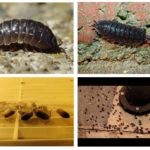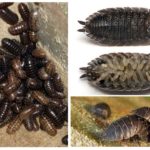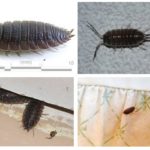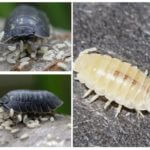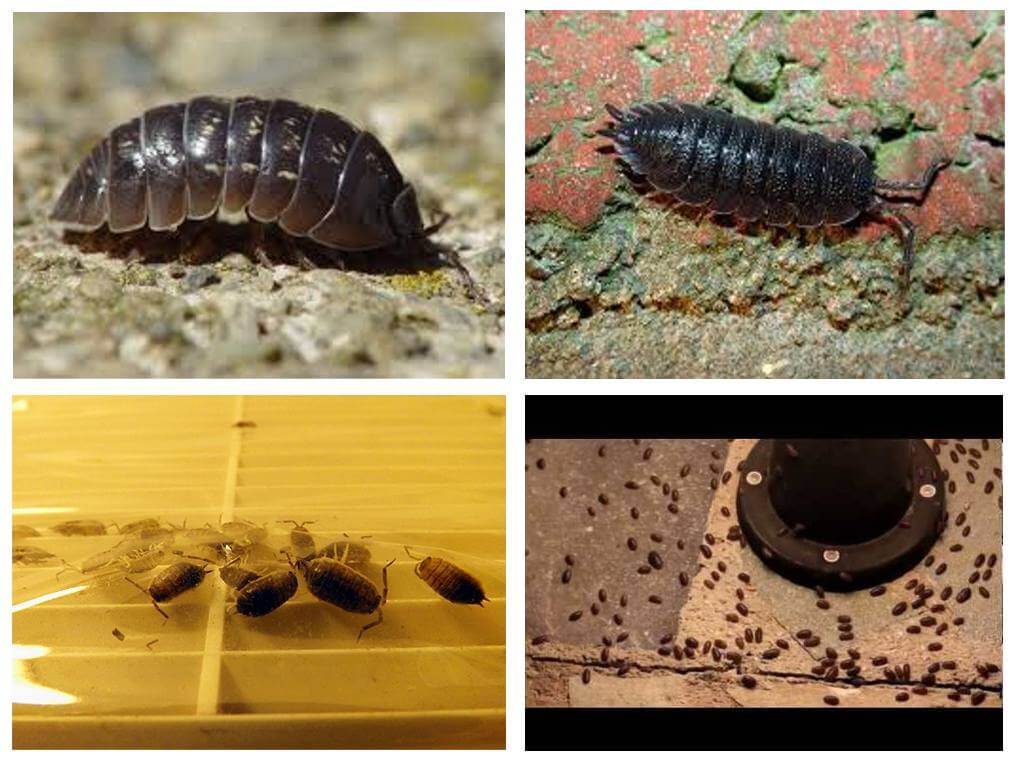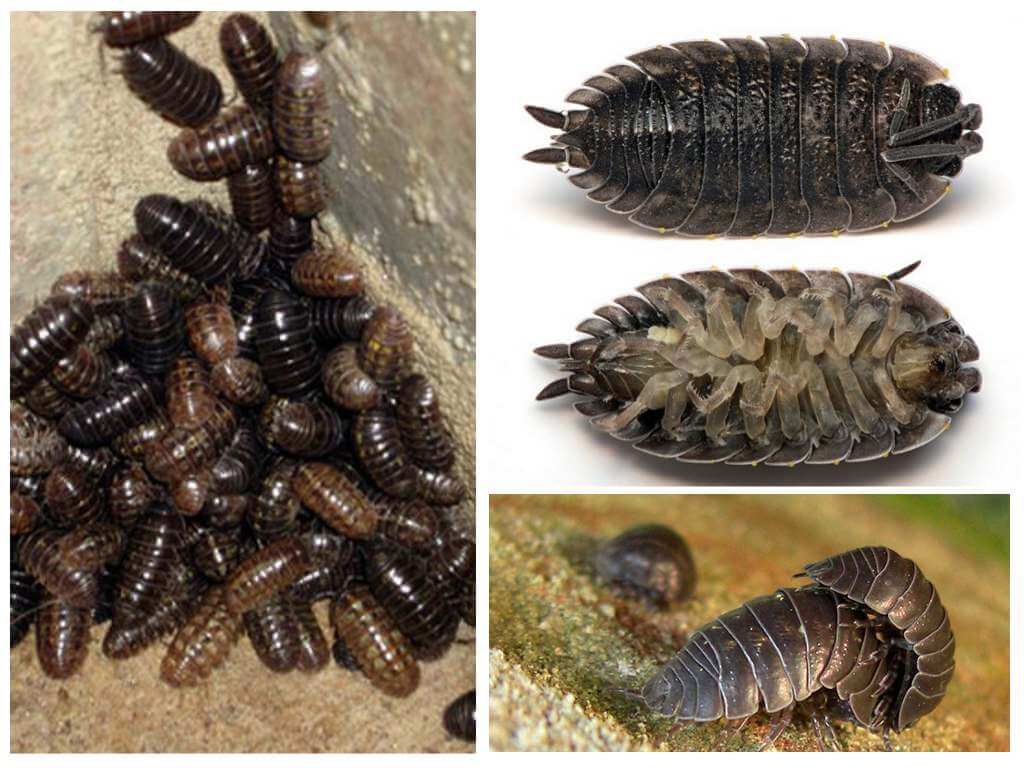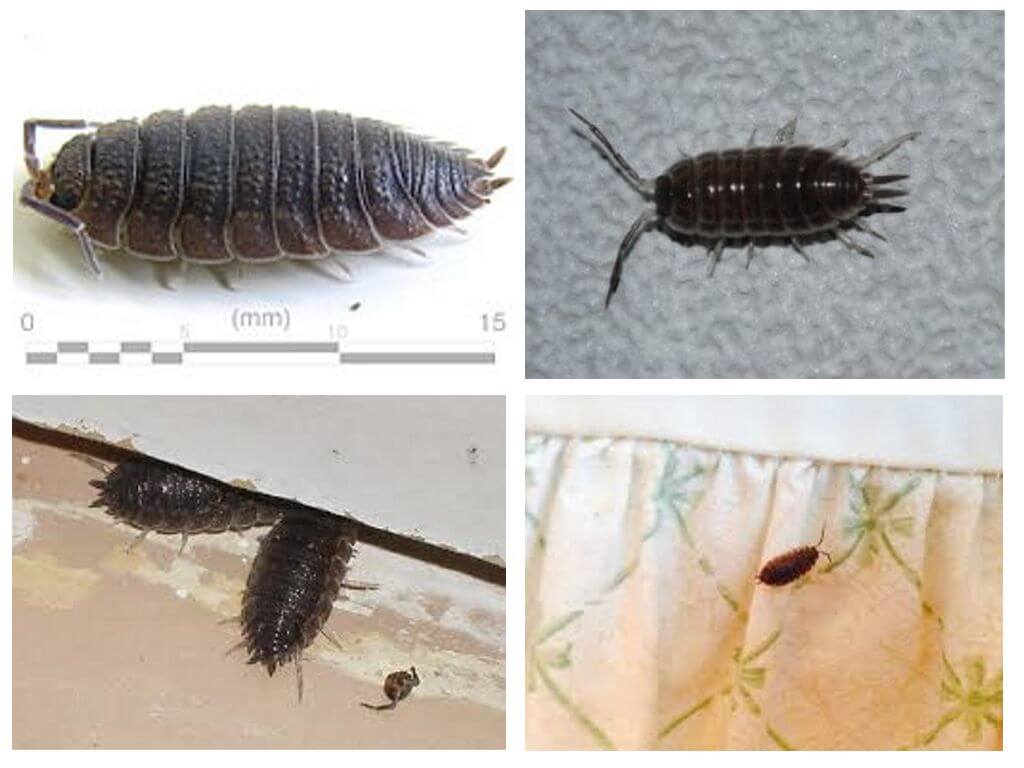Description of wood lice - what they eat, how dangerous they breed, how long they live
Content
- Mokritsy
- Gullet
- Mokritsy
- Lice larvae
A lot of tenants live in our houses, which we didn’t even invite to live with ourselves. And one of the most unpleasant-looking woodlice. Despite the fact that most often we call wood insects insects, it is not true. It is enough to carefully consider the photo of wood lice, to understand that its “relatives” are crustaceans.
Many are surprised by the fact that the “insects” are not pests, although some sources claim this.These creatures can live in the human dwelling, but their only “fault” is an unpleasant appearance. Their appearance in the house indicates an excessive dampness of the room, which threatens with many serious consequences.
To understand who the woodlice are, this insect or not, it is necessary to consider their appearance, peculiarities of life, the way of feeding and so on.
The role of woodlice
The benefits of woodlice in large quantities are much greater than the harm from them. They are considered pests only because they move around the apartment at night and look unpleasant. Before blaming them for all sins, you need to understand that insects roam either to find water to replenish the body’s reserves, or in search of a slightly less humid place, because an excess of water is unpleasant for woodlice.
Curious! These creatures seem to be extremely sluggish creatures, but they are not. Overnight basement residents can migrate to the apartments on the seventh floor.
Living in nature, the “insects” practically do not touch healthy plants, since they are more attracted by decaying grass. This property makes it possible to allow creatures to live in greenhouses and greenhouses.Once in the greenhouse, they can gnaw seedlings, but do not bring significant damage. In the compost heap or layers lining the deciduous forests, these small “bugs” are indispensable. They quickly recycle dead plants, contributing to their rapid decomposition. Able to eat the spores of fungi from the leaves of various plants, preventing further infection.
Important! The significance in nature of these organisms is difficult to overestimate, because what lice eat is faster than the natural cycle: they accelerate the decomposition of organic matter and contribute to the return of nutrients to the soil.
Who are the wood lice
To date, the variety of woodlice is very diverse, some of them live in water, others lead a terrestrial lifestyle. The main species characteristic does not depend on the lifestyle: even land species need a lot of water, therefore they live only in places of high humidity. They got their name for this very reason.
On a note! Man, mostly, meets only one species - Porellioscaber. Otherwise, this crustacean is called mokina-mumps.
At the very beginning it was believed that the wood louse is an organism that is not adapted to land life.But in recent years a number of studies have been conducted that have shown the rapid adaptation of an insect to such a life. Thus, they develop complex behavioral and physiological mechanisms that make it possible to control the water supply in the body. Forming lungs or capillary conductive system, which makes it possible to carry out the withdrawal of nitrogenous wastes with minimal loss of moisture, are considered to be one of these mechanisms.
Although the life of crustaceans without fresh or moderately salty sea water is impossible, they were able to survive in dry Israel, in the north of the African continent and in the overly salty waters of Australia.
Virtually all types of wood lice are additional food for lizards and some species of toads. Birds almost never use them as food, since their bodies release nitrogen, which is unpleasant to birds. The only predator hunting only for our attention is the spider of the genus Dysdera.
Gullet
Since a man is disturbed by one type of woodlice, it should be considered in more detail. It should be immediately noted that although the wood louse belongs to the class of crustaceans, it is more convenient and customary to call it insects.These creatures are found all over the world: in our country, in Australia, Europe, Africa, Asia and both Americas. This prevalence of insect is due, first of all, to human activity.
The size of wood lice is up to 2 cm. Most often, its upper part is dark, with a purple tint. Whereas the bottom is pale, almost white.
Interesting! The coloring of the body is influenced by the surrounding factors. Depending on the temperature, these insects can be brown, yellow, pink or blue.
Like all members of the family, the muck mug prefers to live in conditions of increased dampness, but it is not as dependent on the level of humidity as fellow species of other species.
Body structure
The structure of wood lice is as follows: a clearly defined head of three petals, it has two antennas and complex eyes. Soft tissues are enclosed in an exoskeleton consisting of segments. Such a "shell" protects woodlice from negative environmental factors. Inherent in most crustacean wax cuticle in this species is not available.
It is not so easy to find the respiratory organs of wood lice: they are under the paired plates behind the chest legs.They are represented by an internal plate - a kind of gill (respiratory organ), penetrated by blood vessels. The gills are under the cover of the branches of the abdominal legs, which hold moisture near the gills.
You can see the difference from insects by considering how many legs are in woodlice, because most insects have three pairs of legs. Mokritsa has seven pairs of walking legs, which distinguishes their description from "relatives" – crayfish that use five pairs for walking, and three pairs are necessary for eating.
Behavior
The development of woodlice is not enough to be blamed for the conscious search for favorable conditions, so their movements are due to reflexes. In attempts to find a place where the body will lose a minimum of moisture, the wood louse can change the speed of movement and rotation.
You can conduct an experiment: put a wood bug in a dry or even hot place and watch it. It will move faster, spin more actively, looking for a way to escape from the negative environment. When placed in a dark, damp and cool place, the insect moves slowly, sometimes dying for a long time.
Meal of wood lice
Earlier it was said what lice eat.However, there are no rotting leaves or fungi in our bathrooms. But do not worry about this creature, it is able to take care of itself. Nutrition of wood lice in a human dwelling is quite diverse: the dirt in the corners of the bath, fallen and sodden paper, pieces of human skin that were separated during washing. If the bathroom is maintained at a high level of hygiene and hard times in the life of wood lice are hard times, they can encroach on indoor flowers, but they will not cause them significant damage.
The reason for this is that the woodlouse population in the house is small, they need very little food to feed. Yes, and live food is not useful or desirable for them.
Reproduction and life cycle
Reproduction of wood lice - bisexual. This means that to continue the race we need partners of different sexes.
Interesting! The female has two genital holes in which the male alternately places his seed. Filling one, he goes to the next.
It is very curious how woodlice reproduce, because this process has unique features. These crustaceans can breed in any season, but the male needs to wait for molting, otherwise the genital openings will be closed. He finds a female in advance and is close to the molt.He helps her get rid of the scales, and only then can begin the process.
Woodlip larvae are located in a brood bag resembling a cockroach. Fertilized eggs are placed in a chamber filled with fluid. Young individuals leave from there after full maturity.
After hatching, a few molts should pass, and only then will the insect reach sexual maturity. The difference in the appearance of a young and mature organism is so great that many are sure that this is exactly what the woodlice larva looks like.
How much woodlice live depends on their habitat conditions. Their life span can vary from 7 days to 2 months.
Interesting! The back of the body sheds before the front. The difference may be several days. During this period, the insect looks like it consists of two different parts. Discarded cuticles of wood lice are eaten.
Wood lice bites and danger to humans
Some claim to have been bitten by these “bugs.” However, the mouth of these creatures is intended only for soft decaying food. Even living plant cells they eat with difficulty. Knowing what lice feed on, you can be sure that they are not able to bite physiologically or physically.
According to the knowledge of these crustaceans today, these creatures are not carriers of infections, do not bite a person, tend to stay away from him as far as possible. Therefore, we can say with certainty: they do not pose a danger to humans. If you ask what the woodlice are dangerous at all, and not just for a person, then this question can be answered: they are absolutely not dangerous.
Of course, woodlice, for which the habitat - your bathroom, can not cause sympathy. But when starting a fight with them, one should remember what benefit and harm of them is and think: maybe it’s better to eliminate the cause of their occurrence in the house than get rid of every woodlouse in the bathroombecause the “bug” is completely harmless.

